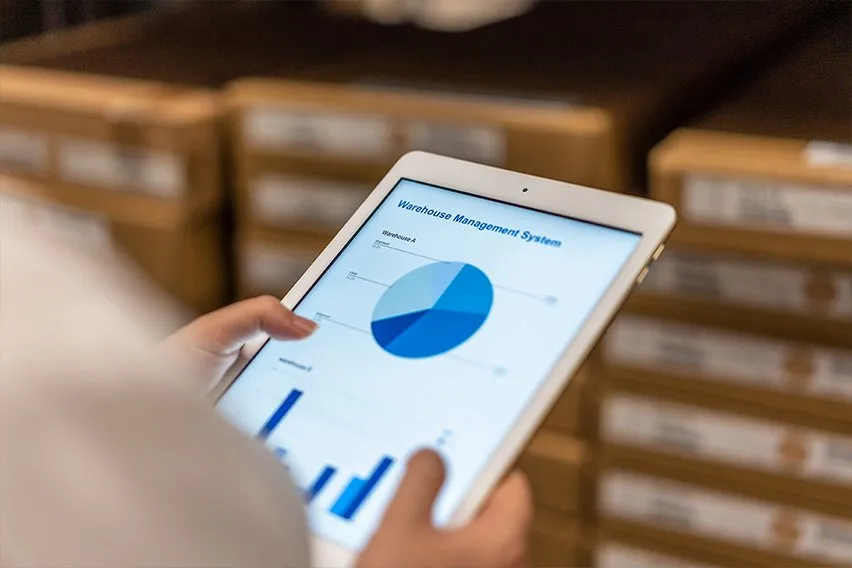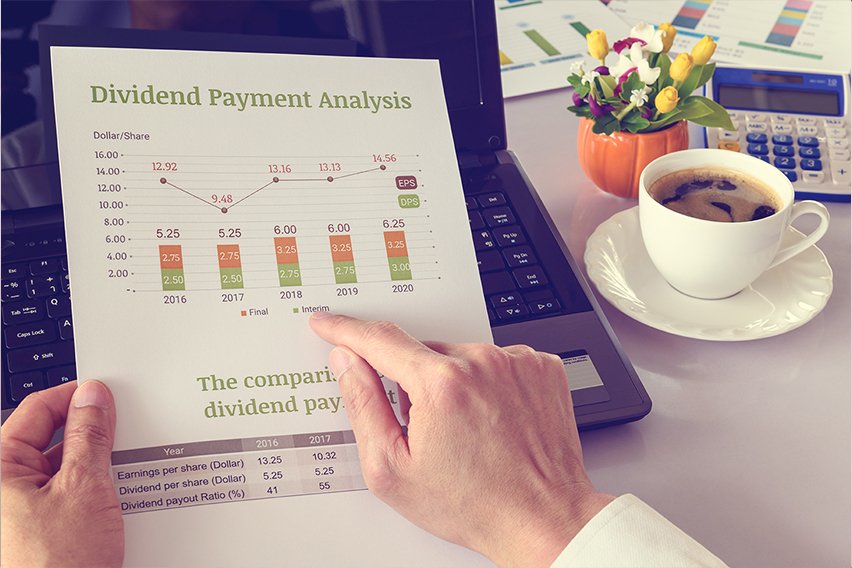How to Calculate the Inventory Turnover Ratio for Your Business

The inventory turnover ratio is a measurement of how efficiently stock is managed. It’s also called the stock turnover, inventory turns and stock turn. It shows you how many times you’ve sold and replaced products – turned them over – within a set timeframe.
Businesses can use this information in a variety of ways to identify and resolve issues in their inventory management. Helping to answer questions like:
- Why have we got excess inventory in this section?
- Is this new product moving quickly enough?
- How long will it take for us to sell all of this older stock?
Discover how using an inventory turnover ratio can improve your business efficiency.
Here’s What We’ll Cover:
What Is the Inventory Turnover Ratio?
Which Inventory Turnover Ratio Is Most Useful?
Examples of Inventory Turnover Ratio
So, a High Inventory Turnover Ratio Is What I’m Aiming For?
Why Do I Need to Work Out My Inventory Turnover?
Where Do I Record My Inventory Turnover Ratio?
How to Tackle Inventory Management Problems
What an Inventory Turnover Ratio Doesn’t Tell You
What Is the Inventory Turnover Ratio?
There are two ways to work out your inventory turnover ratio:
- Divide the Cost of Goods Sold (COGS) by the average inventory
- Divide sales by average inventory
As formulas:
- Inventory Turnover Ratio = Cost of Goods Sold / Average Inventory
- Inventory Turnover Ratio = Annual Sales / Average Inventory
Let’s make sure we’re all working with the same definitions for each of these component parts.
- Cost of Goods Sold: All the production costs of the goods, often shortened to COGS
- Average Inventory: The average amount of inventory sold. Calculate this by adding the beginning inventory and end inventory balances together, then divide by two.
- Sales: Actual sales made
The inventory turnover ratio applies to a set time period. This could be a financial period, year, quarter, season or month – depending on how you want to use the information.

Which Inventory Turnover Ratio Is Most Useful?
The inventory turnover ratio that uses Cost of Goods Sold is a more accurate indicator of your business’s health. Using the sales figure misleadingly inflates the inventory turnover figure because it includes the sales mark-up. The Cost of Goods Sold formula is also better to get an overall annual picture because it evens out any seasonal peaks and troughs.
Examples of Inventory Turnover Ratio
Let’s look at the inventory turnover of 3 different companies over 1 financial year. This is the number of times each company has replenished their inventory in one year. Then we’ll delve into what it means.
Company 1
- Cost of Goods Sold: £600,000
- Average Inventory: £300,000
- Inventory Turnover Ratio: 2
Company 2
- Cost of Goods Sold: £110,000
- Average Inventory: £450,000
- Inventory Turnover Ratio: 0.24
Company 3
- Cost of Goods Sold: £600,000
- Average Inventory: £250,000
- Inventory Turnover Ratio: 2.4
We’ve applied the more accurate Inventory Turnover formula using the Cost of Goods Sold, rather than sales, figure.
What Does It All Mean?
Figures are only meaningful if we think about what they’re telling us. In the case of the Inventory Turnover of these 3 companies, we’ve got some varied results – but what do they tell us?
Both Company 1 and 3 have similar Inventory Turnover Ratios of 2 and 2.4 respectively. This means they had to renew their stock twice in this financial year and indicates a healthy level of profitability.
Company 2 has an Inventory Turnover Ratio of only 0.24. This isn’t good. They’ve got stock stuck on shelves and are possibly paying over the odds for storage. There are many reasons why this might have happened. And this Inventory Turnover Ratio formula shows that these need to be identified and tackled as a matter of urgency.
So, a High Inventory Turnover Ratio Is What I’m Aiming For?
Generally speaking, the higher the inventory ratio the better. Businesses that sell their products more quickly tend to be more successful. As well as strong sales, it can also indicate insufficient inventory, so you might want to double-check that you’re not missing out on sales from under-ordering.
But there is a very large qualifying factor here – different industries have a different average turnover rate.
Some high volume/low margin sectors have an extremely quick turnover of stock, like fast-food restaurants. They might be monitoring stock levels on a weekly basis.
But low volume/high margin companies, like tractor manufacturers, expect to sell fewer items over an entire year, but at a much higher per product price. So their inventory turnover ratio will be much lower.
Businesses like clothes retailers must continually retain a large quantity of stock. By definition, they need different ranges, styles and sizes. So their stock turnover might be quick, but not as quick as others.
You need to be aware of your industry’s inventory turnover ratio norm, so you can see where your business fits in.
Investors also use this ratio as part of their assessment of potential investments. But, as you can see, this is only useful when comparing companies in the same industry. There is no benefit at all to using inventory turnover ratio to decide between companies in entirely different sectors because inventory expectations aren’t the same.
Why Do I Need to Work Out My Inventory Turnover?
There are 2 good reasons why calculating your inventory turnover ratio is useful to your business:
- Your bank is assessing you for a business loan and you’ve listed inventory as collateral. Having figures to show a quick turnaround is a real confidence booster. It tells the bank that you turn stock into cash nice and speedily. You have strong sales and ‘good liquidity’.
- You can use this information about your inventory management to make better decisions about production, buying new products, pricing, marketing and sales.
And your financial statements must contain all the information anyway, it’s just a question of using it slightly differently.
There are lots of ways you can proactively use your stock turnover ratio, particularly as FreshBooks has all the figures you need already organised. Plenty of extra time to think and strategise.
For example if you have a lower inventory turnover rate, meaning that sales are too slow, you need to work out why. And there are several possible reasons:
- You’re over-ordering stock and that’s created a backlog.
- Dead stock, or obsolete inventory, that’s hanging around and is unlikely to sell at full price. For example, very few people in the UK want bikinis and sarongs in November. Unless they’re lucky enough to be going away. So now you’ve got cash tied up in overstocked inventory levels and you’re paying extra storage. This inventory isn’t making you money, in fact it’s started to cost.
- Sales have slowed down and you’ve built up a stockpile of either raw materials or ready-to-sell products. This can be because of a plethora of external factors, like a global health crisis.
- Shrinkage that’s usually down to either theft or wastage. An example of the latter is fresh produce not selling before it’s sell by date.
Where Do I Record My Inventory Turnover Ratio?
Your Cost of Goods Sold already on your FreshBooks annual income statement. And all your inventory balances are on your balance sheet. Here are the other activity ratios that are very useful for business owners to plan for profitability.

How to Tackle Inventory Management Problems
You need to know exactly where you are before you can work out where you’re going. So do a full inventory audit. Actually get into your warehouse and find those dust-covered boxes shoved in a corner.
Now you know what you’ve got, you need to decide what to do with it. For example, discount a batch of items to get rid of them. And question why they didn’t sell – was it a lack of advertising? Did a competitor sell a newer version at the same time?
Depending on your issues, perhaps you need to reconsider your security arrangements around warehouses and stock replenishment. Do you need to change who has access? Maybe you need to install CCTV.
Then you need to establish inventory management processes that improve your current situation and ensure better inventory turnover into the future. This means measuring, reporting and regularly evaluating your position. Inventory management software is a time-saver here.
Consider what you’ve learned from your inventory audit when making future stock purchasing decisions. Perhaps ask suppliers if you can work with a sale or return contract.
You also need to make sure that staff in all departments understand the importance of keeping inventory turnover high and their role in achieving this aim.
What an Inventory Turnover Ratio Doesn’t Tell You
If you’re selling a service, this financial ratio isn’t relevant to your business. It only applies to companies with considerable stocks of the products they sell.
The inventory turnover ratio is only 1 measure of your business. It can’t possibly give the whole picture and must be used in conjunction with other metrics – especially by investors or lenders.
And no matter what this ratio says, it’s always better to sell anything at a profit. No one wants to be selling off old stock at a low gross profit margin, or even a loss.
Your inventory turnover ratio does give you useful figures that you can use to investigate and fine-tune your inventory management. But it shouldn’t be used as the only measure of your company’s financial health. Here are 7 other financial ratios that are helpful for business owners to track growth and to prove investability.
RELATED ARTICLES

 What Are Micro Entity Accounts?
What Are Micro Entity Accounts? What Is a Merchant Account? How Do I Get One?
What Is a Merchant Account? How Do I Get One? What Is a Cash Flow Forecast and How to Make It?
What Is a Cash Flow Forecast and How to Make It? What Is a Dividend? Definition, Example and How They Work
What Is a Dividend? Definition, Example and How They Work What Is Net Pay?
What Is Net Pay?